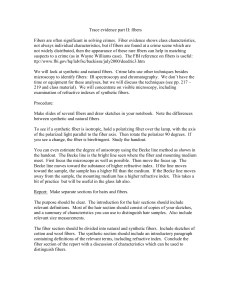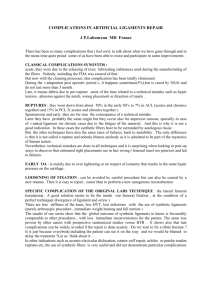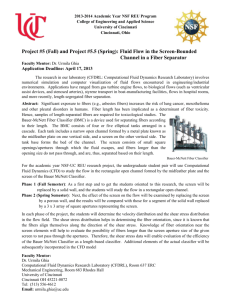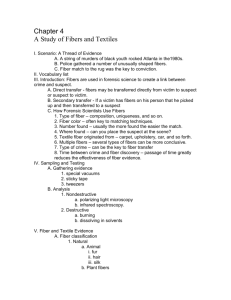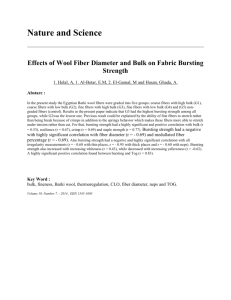Fiber Analysis Lab: Forensic Science Chemistry
advertisement
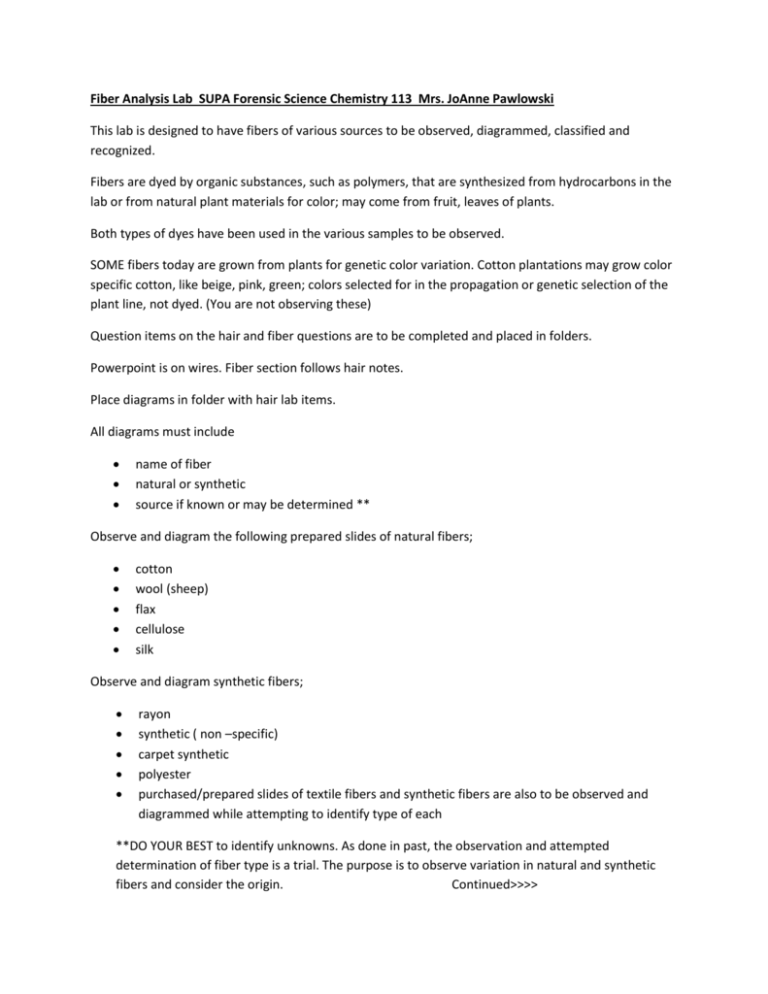
Fiber Analysis Lab SUPA Forensic Science Chemistry 113 Mrs. JoAnne Pawlowski This lab is designed to have fibers of various sources to be observed, diagrammed, classified and recognized. Fibers are dyed by organic substances, such as polymers, that are synthesized from hydrocarbons in the lab or from natural plant materials for color; may come from fruit, leaves of plants. Both types of dyes have been used in the various samples to be observed. SOME fibers today are grown from plants for genetic color variation. Cotton plantations may grow color specific cotton, like beige, pink, green; colors selected for in the propagation or genetic selection of the plant line, not dyed. (You are not observing these) Question items on the hair and fiber questions are to be completed and placed in folders. Powerpoint is on wires. Fiber section follows hair notes. Place diagrams in folder with hair lab items. All diagrams must include name of fiber natural or synthetic source if known or may be determined ** Observe and diagram the following prepared slides of natural fibers; cotton wool (sheep) flax cellulose silk Observe and diagram synthetic fibers; rayon synthetic ( non –specific) carpet synthetic polyester purchased/prepared slides of textile fibers and synthetic fibers are also to be observed and diagrammed while attempting to identify type of each **DO YOUR BEST to identify unknowns. As done in past, the observation and attempted determination of fiber type is a trial. The purpose is to observe variation in natural and synthetic fibers and consider the origin. Continued>>>> Complete the items below. 1. What is the chemistry of polymers? Consider both carbon rings and chains in the response. (What is the chemistry of the monomer units that make synthetic fiber manufacture possible?) 2. Construct a diagram/schematic of the repetitious nature of polymers and label the diagram. 3. Identify 2 polymers that have a use in everyday life. 4. From what material are synthetic fibers derived? 5. Why have synthetic fibers been developed? 6. Cite two specific examples of how synthetic materials are used in your everyday life and why they are useful. 7. The availability of natural fibers is limited to ____? 8. The term natural fibers refers to those that originate from__________________ 9. Cotton is different from wool in what way? 10. Why do plant materials make for strong, resilient fibers or fabric? 11. How are fibers protected or preserved as evidence from a crime scene? 12. In what unit in the crime lab, would hair or fiber be examined? 13. Is fiber evidence individual, comparative and /or class evidence? Explain its usefulness as evidence in a case.

